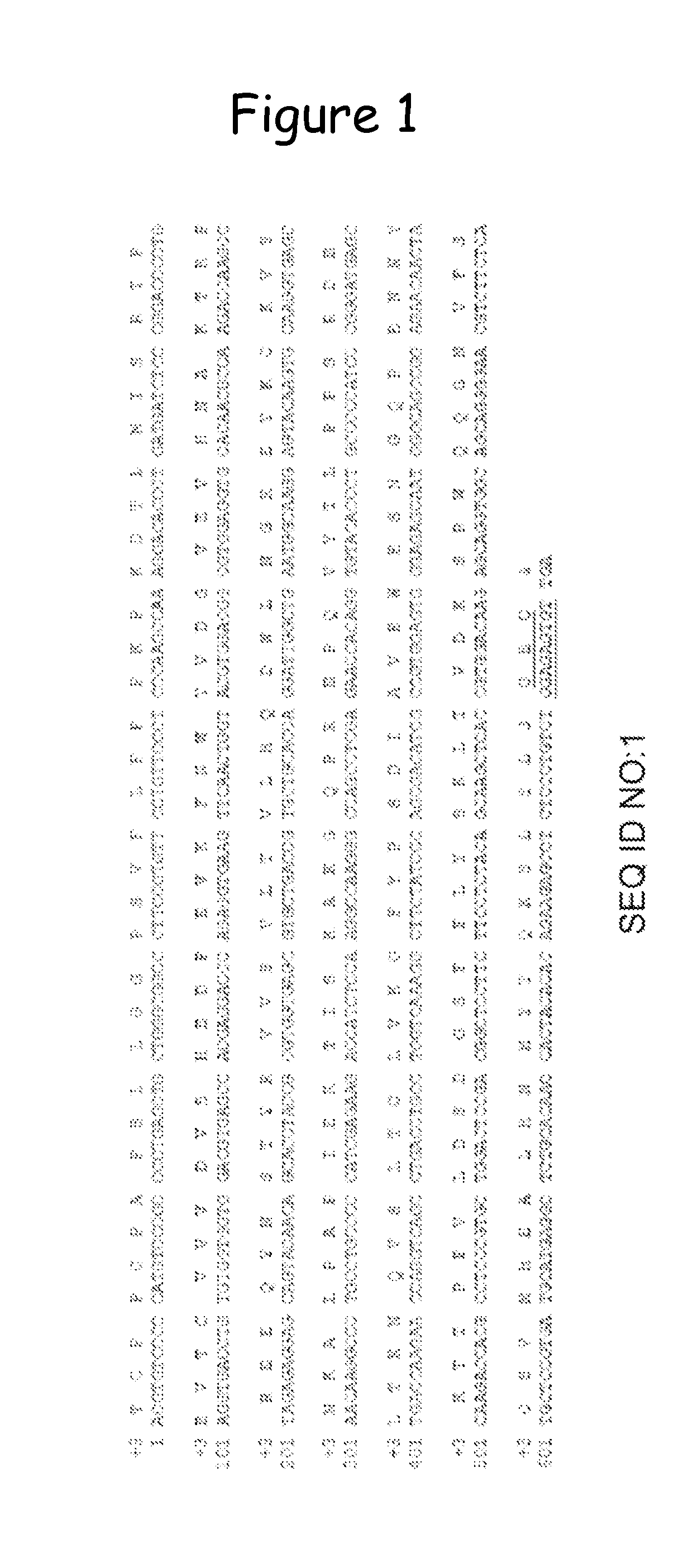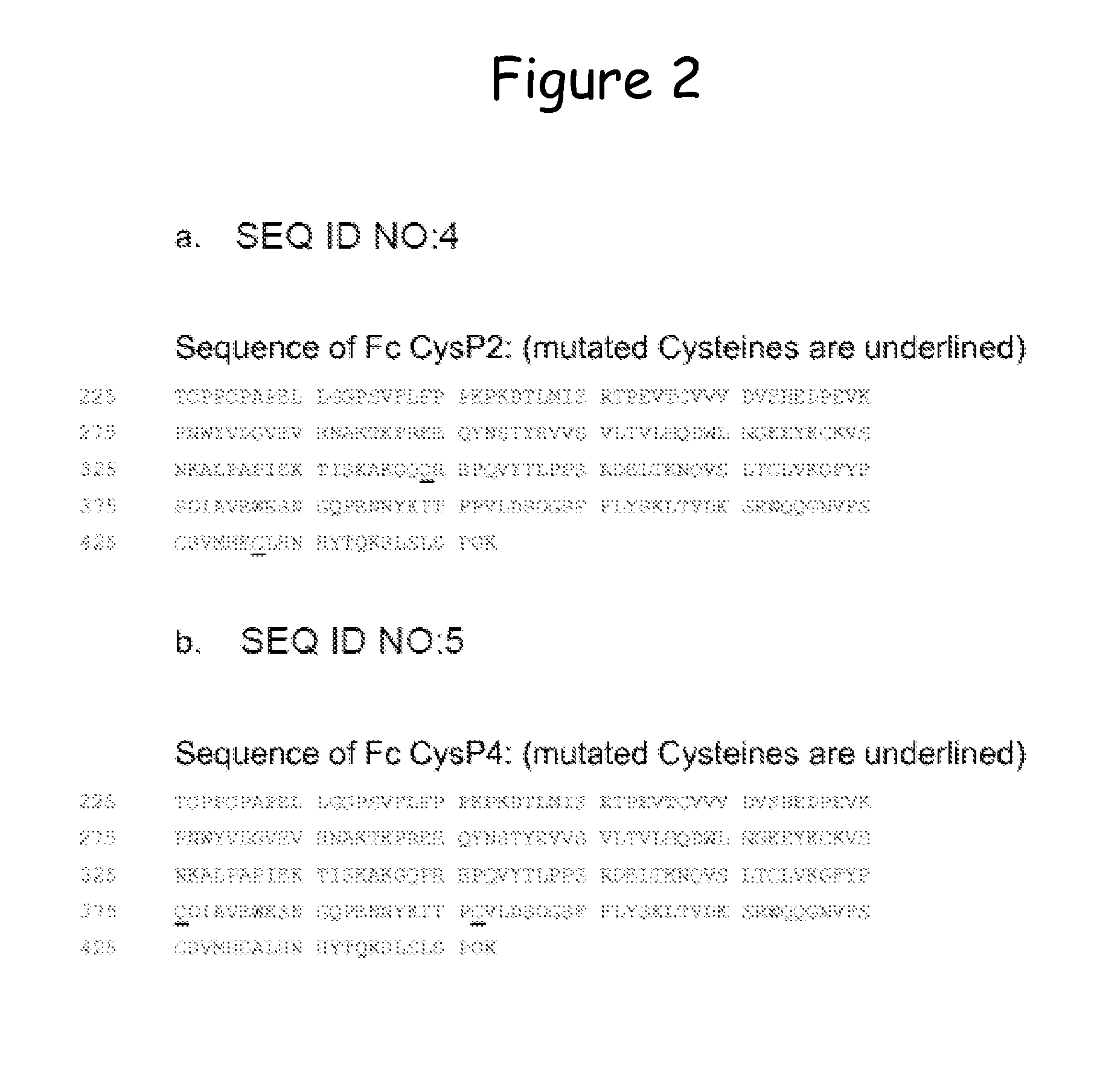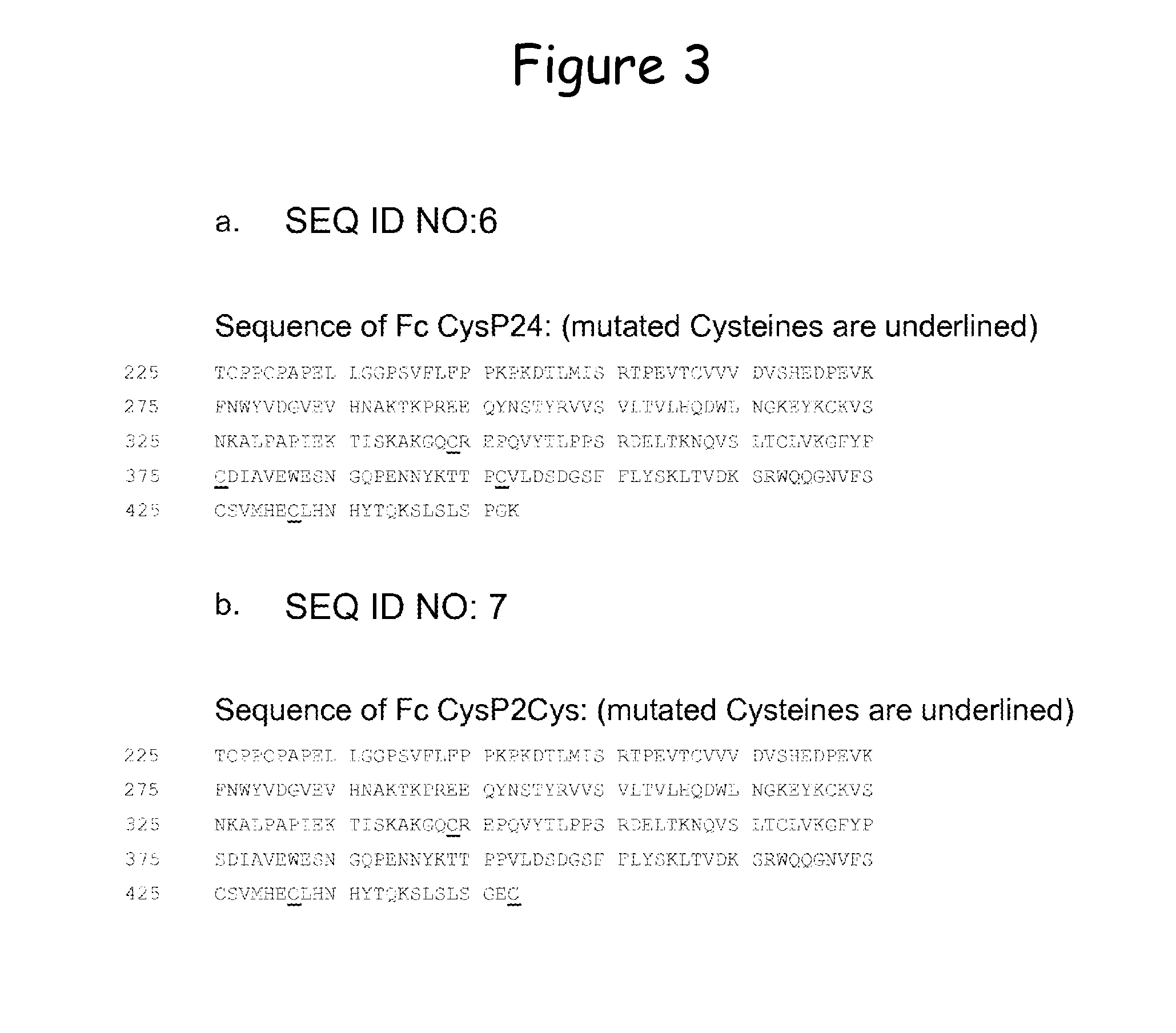Stabilized immunoglobulin constant domains
a constant domain and immunoglobulin technology, applied in the field of multi-domain immunoglobulin, can solve the problems of limited storage capacity of the scaffold used to prepare such libraries, and achieve the effect of improving the antigen binding affinity increasing the thermostability of the multi-domain modular antibody
- Summary
- Abstract
- Description
- Claims
- Application Information
AI Technical Summary
Benefits of technology
Problems solved by technology
Method used
Image
Examples
example 1
C-Terminal Disulfide Bridge in Fc
[0192]In order to increase the stability of a homodimeric Fc fragment, an interchain disulfide bridge was engineered at the C-terminus of the CH3 domain.
[0193]Mutating residues in the CH3 domain C-terminally to Ser124 (IMGT numbering) structurally allows the formation of a disulfide bridge, to construct a homodimeric Fc fragment with a C-terminal disulfide bond. According to this example, the residues that were introduced as mutations in the CH3 domain were the three C-terminal residues of the CL domain, GlyGluCys. The mutations that were introduced in the CH3 domain were therefore: Pro125Gly, Gly129Glu, Lys130Cys (IMGT numbering).
[0194]Sequence and Translation of the Mutated Fc:
[0195]The sequence of the mutant Fc is provided in FIG. 1 (SEQ ID No. 1—nucleotide sequence; SEQ ID No. 2—protein sequence). The mutation was introduced using standard methods for site directed mutagenesis. In particular, the Quikchange kit (Stratagene) was used. The mutageni...
example 2
Intradomain Disulfide Bridges in Fc Wild-Type
[0206]In order to increase the stability of a homodimeric Fc fragment, two different intrachain disulfide bridges were engineered in the CH3 domain.
[0207]By mutating Pro343Cys and Ala431Cys, Fc wt CysP2 was generated (all numberings according to the Kabat numbering scheme). The two residues that are mutated to Cys in this clone are located near the N-terminus of the CH3 domain (Pro343) and in the FG loop (Ala431) (IMGT numbers of CysP2: 1.2 and 110). The sequence is provided in FIG. 2a. (mutated Cysteines are underlined) and SEQ ID No. 4.
[0208]By mutating Ser375Cys and Pro396Cys, Fc wt CysP4 was generated. The two residues that are mutated to Cys in this clone are located in the BC loop of the CH3 domain (Ser375) and in the D sheet (Pro396) (IMGT numbers of CysP4: 33 and 83). The sequence is provided in FIG. 2b. (mutated Cysteines are underlined) and SEQ ID No. 5.
[0209]The mutations were introduced into the DNA sequence coding for Fc wild...
example 3
Intra- and Interdomain Disulfide Bridges in Fc H10-03-6
[0215]Previously, an Fc with mutations in structural loops of the CH3 domains was generated which binds specifically to HER2 / neu (according to WO2009 / 000006A1). The sequence of Fc H10-03-6 is provided in FIG. 4a. and SEQ ID No. 8. It was found that the thermostability of this clone is decreased relative to Fc wild-type. Therefore, attempts to stabilise it by introduction of disulfide bridges were undertaken.
[0216]Into this HER2 / neu specific Fc, the C-terminal disulfide bridge according to Example 1 was introduced to generate clone H10-03-6 Cys (the sequence is provided in FIG. 4b. (mutated Cysteines are underlined) and SEQ ID No. 9). Furthermore, the disulfide bridge CysP2 according to Example 2 was introduced (H10-03-6 CysP2, the sequence is provided in FIG. 4c. (mutated Cysteines are underlined) and SEQ ID No. 10) as well as a combination of these two disulfide bridges (H10-03-6 CysP2Cys, the sequence is provided in FIG. 4d. (...
PUM
| Property | Measurement | Unit |
|---|---|---|
| Tm | aaaaa | aaaaa |
| length | aaaaa | aaaaa |
| distance | aaaaa | aaaaa |
Abstract
Description
Claims
Application Information
 Login to View More
Login to View More - R&D
- Intellectual Property
- Life Sciences
- Materials
- Tech Scout
- Unparalleled Data Quality
- Higher Quality Content
- 60% Fewer Hallucinations
Browse by: Latest US Patents, China's latest patents, Technical Efficacy Thesaurus, Application Domain, Technology Topic, Popular Technical Reports.
© 2025 PatSnap. All rights reserved.Legal|Privacy policy|Modern Slavery Act Transparency Statement|Sitemap|About US| Contact US: help@patsnap.com



